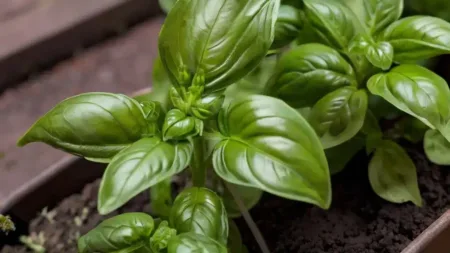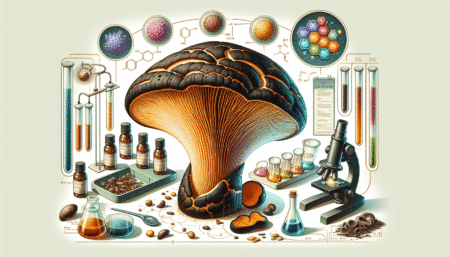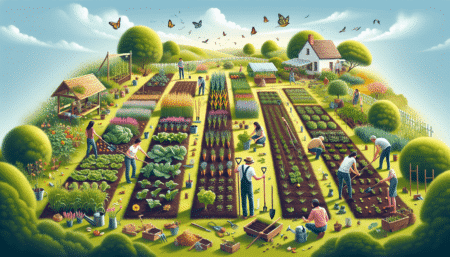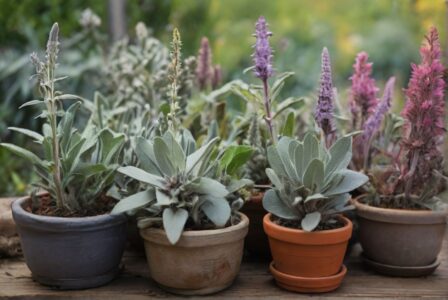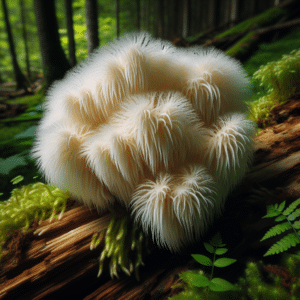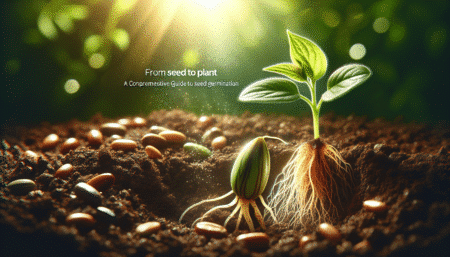- Growing basil: tips for the right care and choice of location
- Known varieties of basil: differences and special features in taste
- Ocimum sanctum or tenuiflorum
- Ocimum americanum
- Ocimum basilicum - The many uses of basil in the kitchen
- Health benefits of regular consumption of basil
- DIY project: Homemade pesto with fresh basil
- Basil for organic pest control
- Refine delicious summer drinks with the refreshing aroma of basil
Here you can find our different basil seeds!
well-drained soil for optimum growth. The tender leaves should be harvested regularly to encourage the plant and preserve the fresh aroma. Ocimum sanctum can also be purchased as seed to grow in your own garden or in a pot. Its many uses range from being used in pestos to enriching delicious summer drinks with its refreshing flavor. Discover the world of flora and herbs with this special basil!
- Ocimum americanum
Of the various types of basil, Ocimum americanum stands out with its unique aroma. The delicate leaves of this plant exude a refreshing fragrance that enriches any kitchen. When growing this basil, it is important to ensure a sunny location and well-drained soil to guarantee a rich harvest. Caring for this flora requires regular watering and the removal of wilted leaves for healthy growth. Ocimum americanum is ideal for use in a variety of dishes, from salads to pasta dishes. Its many uses in the kitchen make this basil variety particularly popular with amateur chefs and gourmets. Ocimum americanum can be used to make delicious pestos or refine fresh herb butter - a real treat for the palate and senses.
- Ocimum basilicum
Of the various types of basil, Ocimum basilicum is probably the best known and most frequently used plant in the kitchen. The aromatic leaves of this species lend dishes an unmistakable aroma and can be used in a variety of ways. When growing it in your own garden or in a pot, make sure that Ocimum basilicum receives enough sunlight and that the soil is well-drained. The tender leaves can be harvested regularly so that fresh basil is always available. Whether for homemade pesto, as a tasty ingredient in salads or to refine pasta dishes - Ocimum basilicum enriches every culinary creation with its unique flavor. With a little care and attention, this basil species will enrich your garden and kitchen.
3. the many uses of basil in the kitchen
The use of basil in the kitchen is as varied as the aroma of its leaves. From fresh salads and pasta dishes to delicious soups and sauces - this herb adds an aromatic note to any dish. Making homemade pesto with fresh basil, garlic, pine nuts, olive oil and parmesan is particularly popular. The fresh and spicy notes of basil harmonize perfectly with many dishes and give them a special flavour nuance. Basil is also ideal for enhancing desserts or refreshing summer drinks. Its versatility in the kitchen makes basil an indispensable plant for any amateur chef or herb lover.
4. health benefits of regular consumption of basil
The small, aromatic leaves of basil are not only an enrichment for your kitchen, but also for your health. The plant contains valuable ingredients such as essential oils, which can have an anti-inflammatory and antibacterial effect. By eating basil regularly, you can strengthen your immune system and improve your digestion. The herb is also said to have a calming effect on the nerves and alleviate stress symptoms. A fresh pesto with home-grown basil not only provides an intense taste experience, but also an extra portion of healthy vital substances. Take advantage of the many health benefits of basil by incorporating it into your daily diet. Your body will thank you!
5th DIY project: Homemade pesto with fresh basil
Making fresh pesto in your own kitchen? It's a real treat with basil from the garden. The intense aromas of basil leaves give homemade pesto an incomparable freshness and spiciness. In addition to fresh basil, you will also need high-quality olive oil, roasted pine nuts, Parmesan and garlic for this DIY project. Preparation is simple: simply blend all the ingredients in a blender to create a creamy paste - and your delicious pesto is ready! Whether as a dip, spread or sauce for pasta - there are many different ways to use it. Homemade pesto with fresh basil is not only a highlight in terms of taste, but also a creative way to make use of the harvest from your own garden. Try it out and let yourself be seduced by the wonderful aromas of basil!
6. basil for biological pest control
Basil is not only a true all-rounder in the kitchen, but can also be used in the garden as a natural pest control. The essential oils contained in the leaves of basil have a deterrent effect on unwanted insects and pests such as aphids or flies. Clever placement of basil pots or beds close to vulnerable plants can help to keep pests away and thus protect the health of other plants. This organic method is also environmentally friendly and sustainable, as no chemical pesticides need to be used. Another advantage: while you protect your plants from pests, you can harvest fresh basil leaves for your culinary creations at the same time.
7. refine delicious summer drinks with the refreshing aroma of basil
Incomparably refreshing and aromatic at the same time - basil not only adds a unique touch to dishes, but also to summer drinks. Its fresh leaves are ideal for refining lemonades, cocktails or iced teas. Simply place a few leaves in a glass and press lightly with a pestle to release the full aroma. Blends with citrus fruits or mint are particularly popular and round off the taste experience perfectly. On hot days, enjoy a homemade basil iced tea or a refreshing lemonade with a pinch of green freshness. With basil, every sip becomes a summer highlight for your palate. Experiment with different combinations and discover the many ways in which the intense aroma of basil can transform your drinks into true taste sensations.
More questions and answers about basil
What do I need to consider with basil?
When growing basil, it is important to ensure that the plant receives sufficient sunlight. Basil needs at least 6 hours of direct sunlight per day to grow optimally. In addition, the soil should be well-drained and rich in humus to avoid waterlogging. Regular watering is also crucial, as basil likes to be kept moist but does not tolerate wet roots. It is advisable to fertilize the plant regularly to promote healthy growth. To achieve a rich harvest, it is advisable to harvest the leaves regularly, taking care not to cut off more than a third of the plant at a time. This promotes the regrowth of new leaves and prevents the plant from becoming woody prematurely. You should also make sure that basil is not planted next to other herbs such as mint, as these can interfere with each other's growth.
What is basil healthy for?
Basil is healthy because it has many health-promoting properties. It contains a variety of vitamins and minerals such as vitamin K, iron, calcium and magnesium, which are important for good health. Basil has an anti-inflammatory effect and can therefore help with various inflammations in the body. It is also said to have an antioxidant effect that can protect against cell damage. Basil is also said to aid digestion and alleviate stomach complaints. Some studies suggest that basil could also have a positive effect on blood sugar levels. It is also said to strengthen the immune system and promote cardiovascular health. All in all, basil is a healthy herb with many positive effects on the body.
Can you eat basil raw?
Yes, you can also eat basil raw. It is quite common to eat fresh basil leaves raw. They add a fresh and aromatic flavor to salads, sandwiches and other dishes. However, it should be noted that the intense flavor of basil is not to everyone's taste. Some people find it too strong or don't like the slightly peppery taste. When eating basil raw, the leaves should be washed thoroughly to remove any dirt or pesticide residues. Care should also be taken to use only the leaves and remove the stems, as these can often taste bitter. Overall, eating raw basil is an easy way to add a fresh touch to dishes while benefiting from the health benefits of this herb.
What is the best way to grow basil?
Basil grows best when planted in a sunny location with well-drained soil. It prefers warm temperatures and requires regular watering to keep the soil moist. Good ventilation is also important to prevent mold growth. Regular removal of wilted leaves promotes the growth of new shoots. Basil can be grown in the garden as well as in pots or herb beds. To achieve a rich harvest, it is advisable to fertilize the plant regularly and prune it if necessary. Harvesting is best done before the flowering period by cutting off the upper leaves. These care measures ensure that the basil grows back healthy and strong and can be harvested over a longer period of time.
Further links
- https://de.wikipedia.org/wiki/Basilikum
- https://www.mein-schoener-garten.de/pflanzen/basilikum
- https://www.lwg.bayern.de/gartenakademie/gartendokumente/infoschriften/063910/index.php
YouTube
Note: The information in this article is for informational purposes only and is not intended to replace the advice of a physician or other healthcare professional. Always consult a doctor before using any new herbs or supplements. Furthermore, you should always check whether the cultivation/possession/use/processing of certain plants is permitted in your country. As we only offer ornamental plants in our store, we are only allowed to offer Provide information and advice on the correct care of plants!

